前言
JUC 下面的相关源码继续往下阅读,这就看到了非阻塞的无界线程安全队列 —— ConcurrentLinkedQueue,来一起看看吧。
公众号:liuzhihangs,记录工作学习中的技术、开发及源码笔记;时不时分享一些生活中的见闻感悟。欢迎大佬来指导!
介绍
基于链接节点的无界线程安全队列,对元素 FIFO(先进先出)进行排序。 队列的头部是队列中最长时间的元素,队列的尾部是队列中最短时间的元素。 在队列的尾部插入新元素,队列检索操作获取队列头部的元素。
当许多线程共享对公共集合的访问 ConcurrentLinkedQueue 是一个合适的选择。 与大多数其他并发集合实现一样,此类不允许使用 null 元素。
基本使用
public class ConcurrentLinkedQueueTest {
public static void main(String[] args) {
ConcurrentLinkedQueue<String> queue = new ConcurrentLinkedQueue<String>();
// 将指定元素插入此队列的尾部。 queue.add("liuzhihang"); // 将指定元素插入此队列的尾部。 queue.offer("liuzhihang");
// 获取但不移除此队列的头,队列为空返回 null。 queue.peek(); // 获取并移除此队列的头,此队列为空返回 null。 queue.poll(); }}
复制代码
源码分析
基本结构
参数介绍
private static class Node<E> { // 节点中的元素 volatile E item; // 下一个节点 volatile Node<E> next;
Node(E item) { UNSAFE.putObject(this, itemOffset, item); } // CAS 的方式设置节点元素 boolean casItem(E cmp, E val) { return UNSAFE.compareAndSwapObject(this, itemOffset, cmp, val); } // 设置下一个节点 void lazySetNext(Node<E> val) { UNSAFE.putOrderedObject(this, nextOffset, val); }
// CAS 的方式设置下一个节点 boolean casNext(Node<E> cmp, Node<E> val) { return UNSAFE.compareAndSwapObject(this, nextOffset, cmp, val); }
// 省略 ……}
复制代码
在 ConcurrentLinkedQueue 内部含有一个内部类 Node,如上所示,这个内部类用来标识链表中的一个节点,通过代码可以看出,在 ConcurrentLinkedQueue 中的链表为单向链表。
public class ConcurrentLinkedQueue<E> extends AbstractQueue<E> implements Queue<E>, java.io.Serializable { // 其他省略
// 头结点 private transient volatile Node<E> head;
// 尾节点 private transient volatile Node<E> tail;}
复制代码
头尾节点使用 volatile 修饰,保证内存可见性。
构造函数
public ConcurrentLinkedQueue() { head = tail = new Node<E>(null);}
复制代码
当创建对象时,头尾节点都是指向一个空节点。
添加元素
public boolean add(E e) { return offer(e);}public boolean offer(E e) { // 验证是否为空 checkNotNull(e);
// 创建节点 final Node<E> newNode = new Node<E>(e);
// 循环入队列 // t 是当前尾节点,p 初始为 t for (Node<E> t = tail, p = t;;) { // q 为尾节点的下一个节点 Node<E> q = p.next; if (q == null) { // 为空,说明后面没有节点,则 CAS 设置尾节点 if (p.casNext(null, newNode)) { // 此时 p.next 是 newNode // 如果 p != t 说明有并发 if (p != t) // 其他线程已经更新了 tail // q = p.next 所以 q == null 不正确了 // q 取到了 t.next // 此时将 tail 更新为 新节点 casTail(t, newNode); // Failure is OK. return true; } // Lost CAS race to another thread; re-read next } // 多线程情况下, poll ,操作移除元素,可能会导致 p == q // 此时要重新查找 else if (p == q) // p = (t != (t = tail)) ? t : head; else // 检查 tail 并更新 p = (p != t && t != (t = tail)) ? t : q; }}
复制代码
画图说明:
当执行到 Node<E> q = p.next; 时,当前情况如图所示:
判断 q == null,满足条件,此时便会执行 p.casNext(null, newNode) 使用 CAS 设置 p.next。
设置成功之后,p == t 没有变动,所以程序退出。
当执行到 Node<E> q = p.next; 时,当前情况如图所示:
多个线程执行 p.casNext(null, newNode) 使用 CAS 设置 p.next。
A 线程 CAS 设置成功:
B 线程 CAS 执行失败, 重新循环,会执行到 p = (p != t && t != (t = tail)) ? t : q。
再次循环就可以成功设置上了。
获取元素
public E poll() { restartFromHead: // 无限循环 for (;;) { for (Node<E> h = head, p = h, q;;) { // 头结点的 iterm E item = p.item; // 当前节点如果不为 null CAS 设置为 null if (item != null && p.casItem(item, null)) { // CAS 成功 则标记移除 if (p != h) // hop two nodes at a time updateHead(h, ((q = p.next) != null) ? q : p); return item; } // 当前队列未空 返回 null else if ((q = p.next) == null) { updateHead(h, p); return null; } // 自引用了, 重新进行循环 else if (p == q) continue restartFromHead; else p = q; } }}
复制代码
画图过程如下:
在执行内层循环时,如果队列为空:E item = p.item; 此时,iterm 为 null,会 updateHead(h, p) 并返回 null。
假设同时有并发插入操作,添加了一个元素,此时如图所示:
这时会执行最后的 else 将 p = q
继续循环获取 item,并执行 p.casItem(item, null) , 然后判断 p != h,更新 head 并返回 item。
这里的情况比较复杂,这里只是列举一种,如果需要可以自己多列举几种。
而查看元素的代码和获取元素代码类似就不多介绍了。
size 操作
public int size() { int count = 0; for (Node<E> p = first(); p != null; p = succ(p)) if (p.item != null) // Collection.size() spec says to max out if (++count == Integer.MAX_VALUE) break; return count;}
复制代码
CAS 没有加锁,所以 size 是不准确的。并且 size 会遍历一遍列表,比较耗费性能。
总结
ConcurrentLinkedQueue 在工作中使用的相对较少,所以阅读相关源码的时候也只是大概看了一下,了解常用 API,以及底层原理。
简单总结就是使用单向链表来保存队列元素,内部使用非阻塞的 CAS 算法,没有加锁。所以计算 size 时可能不准确,同样 size 会遍历链表,所以并不建议使用。
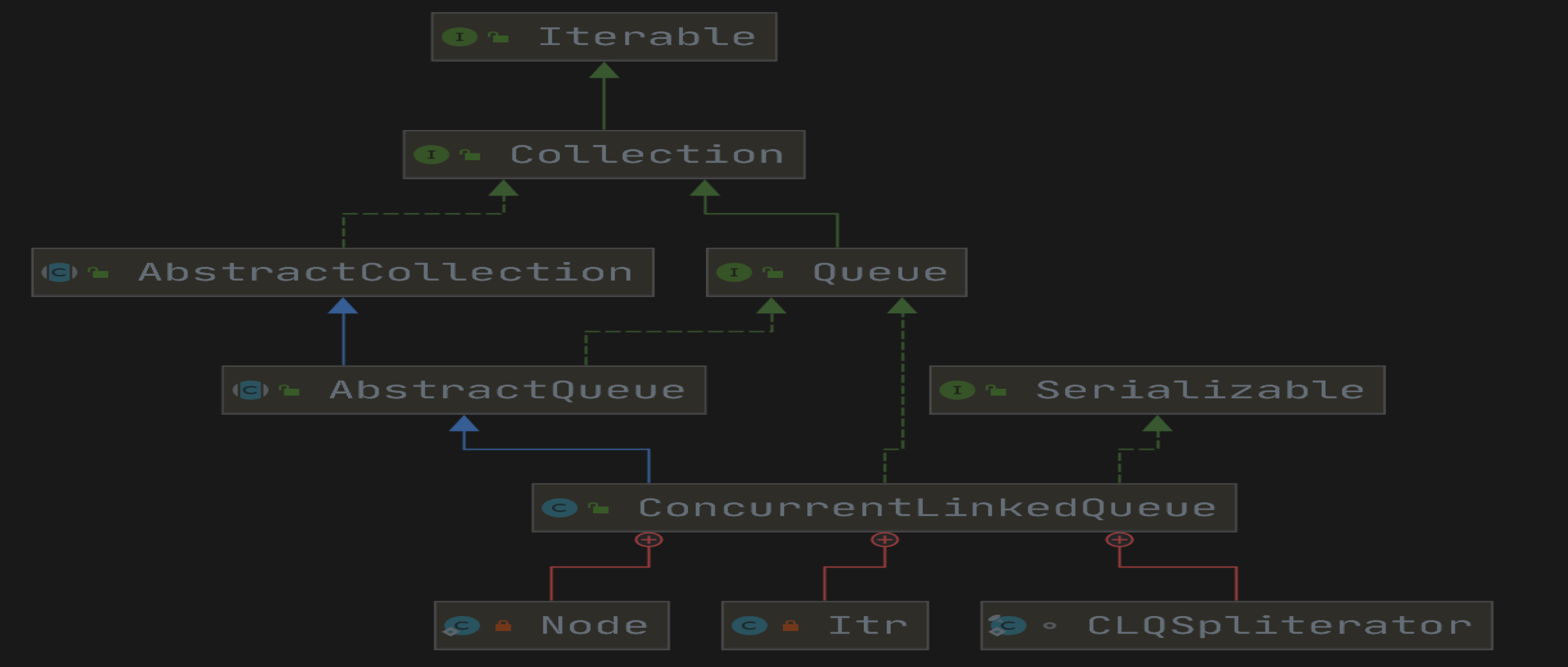
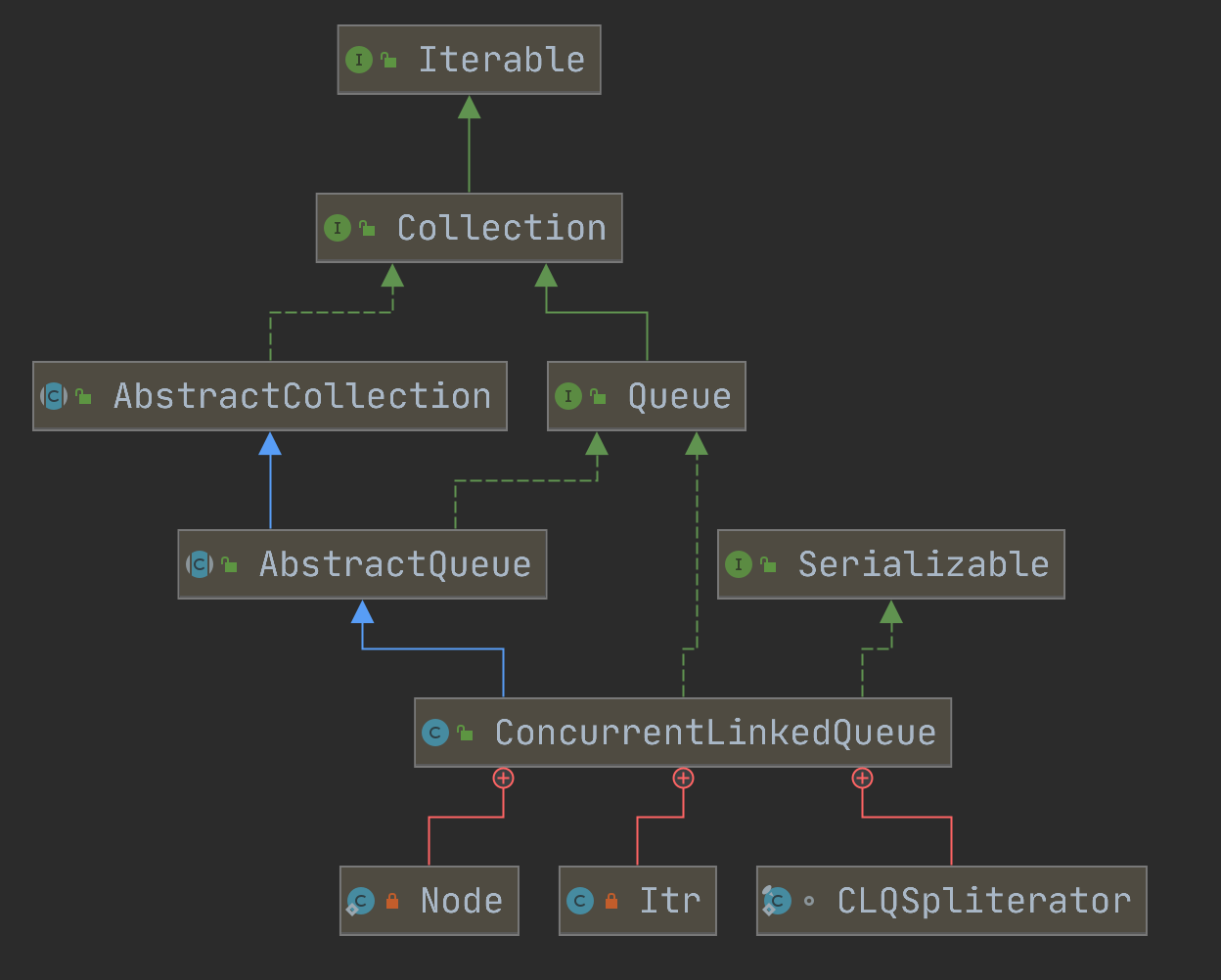
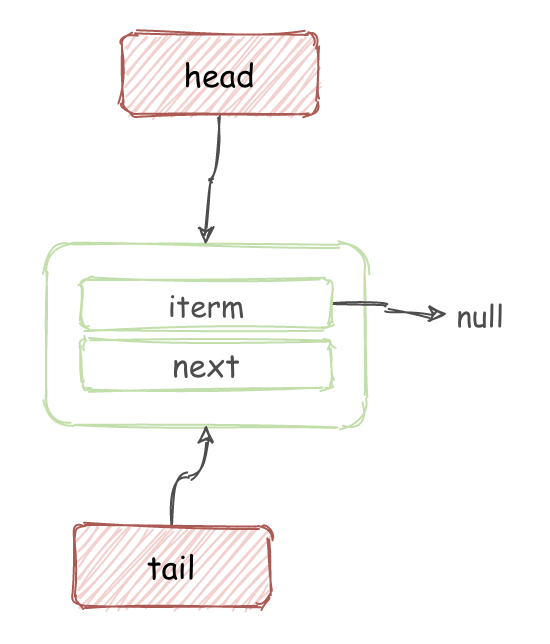


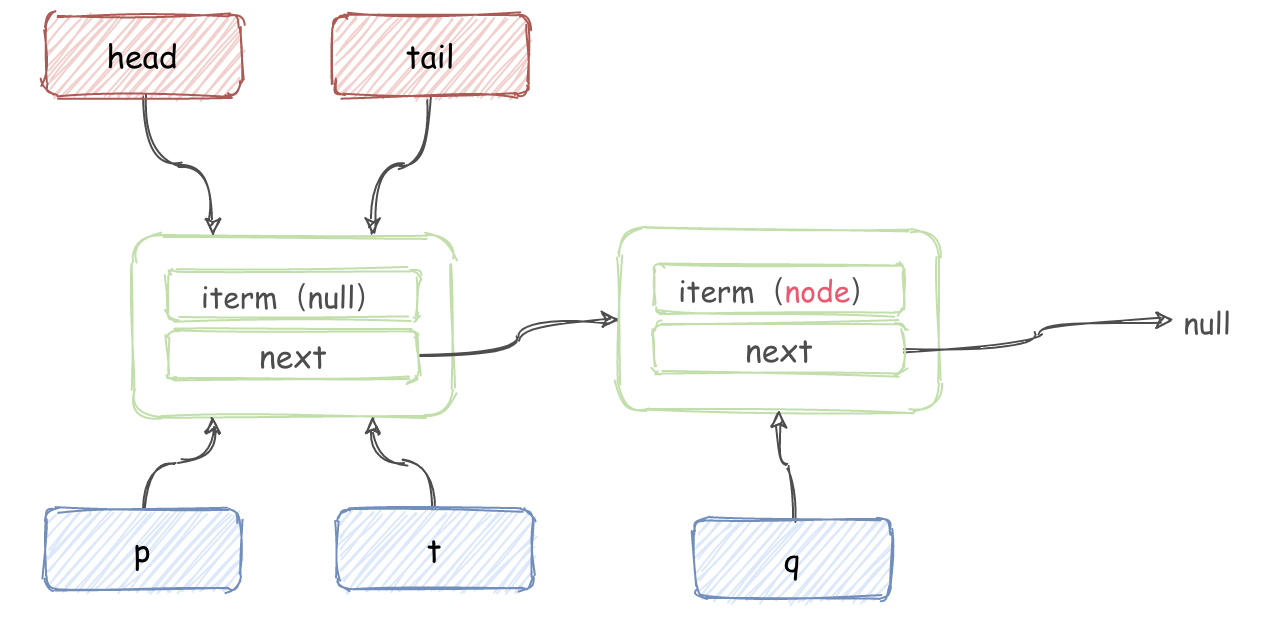
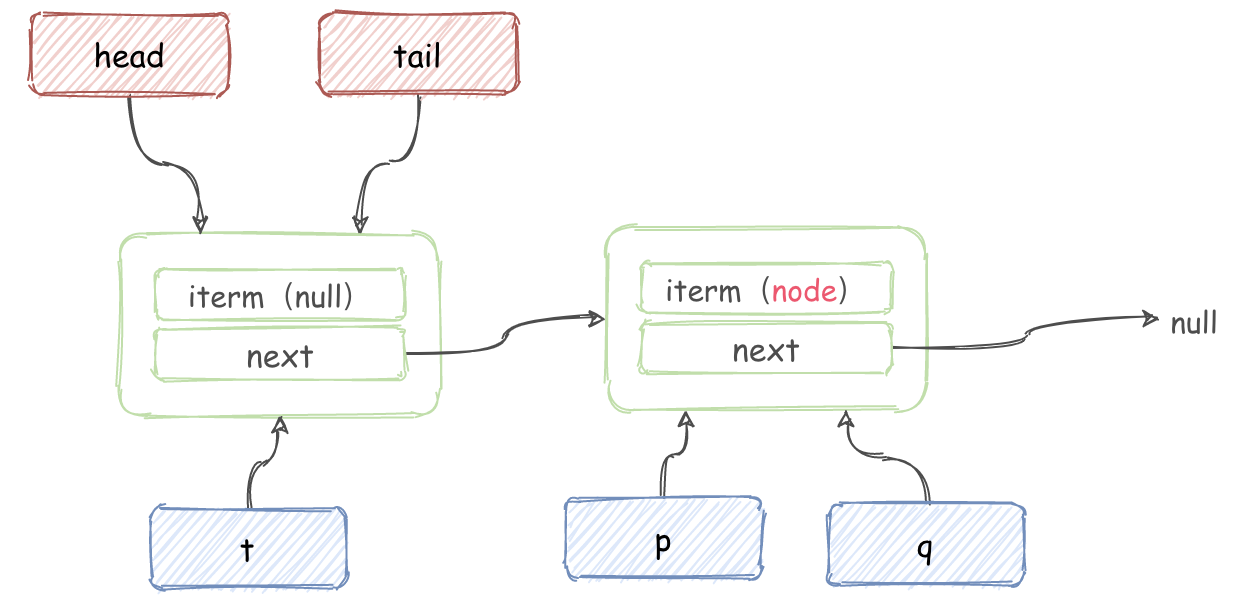
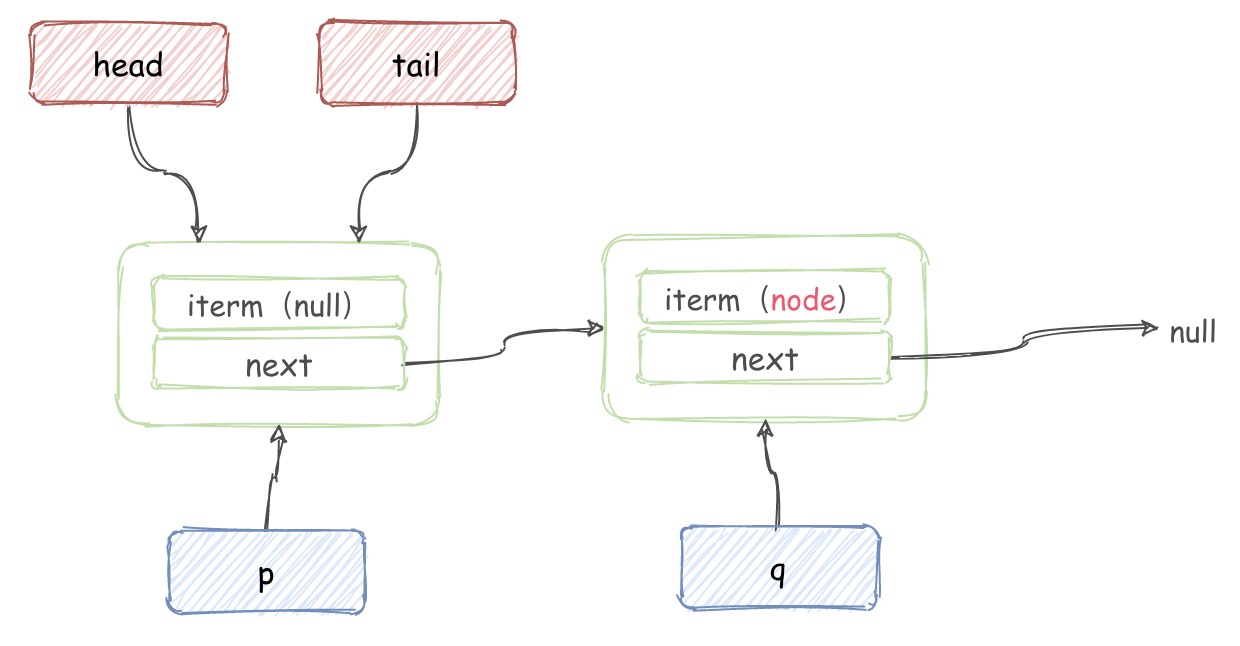
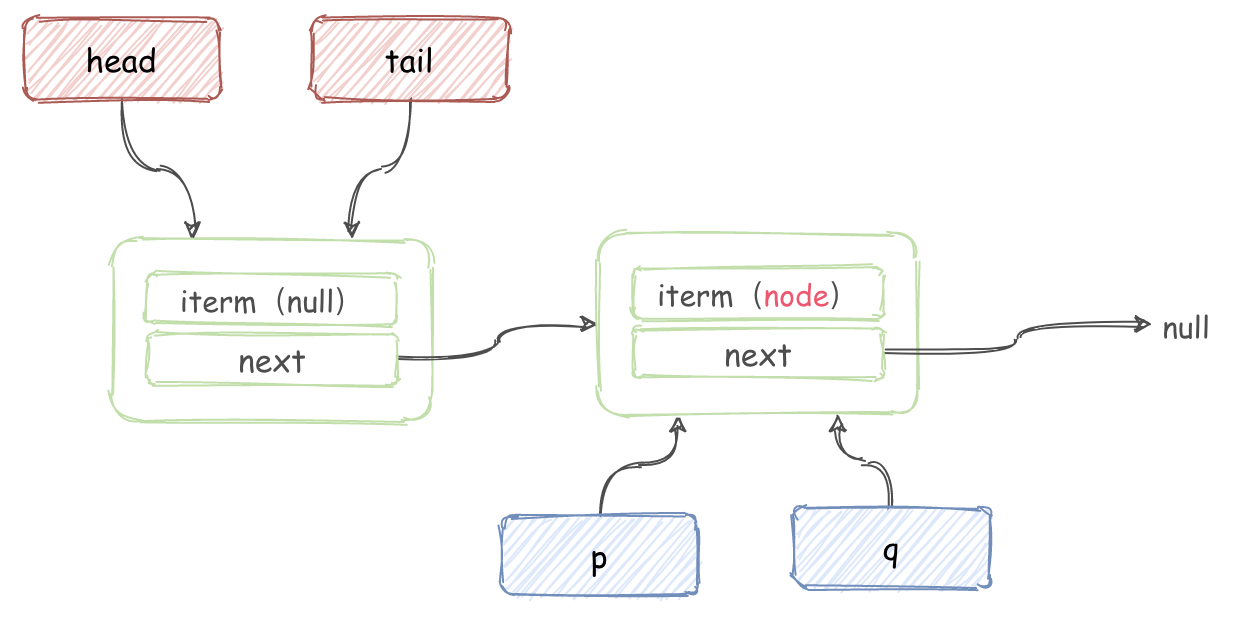
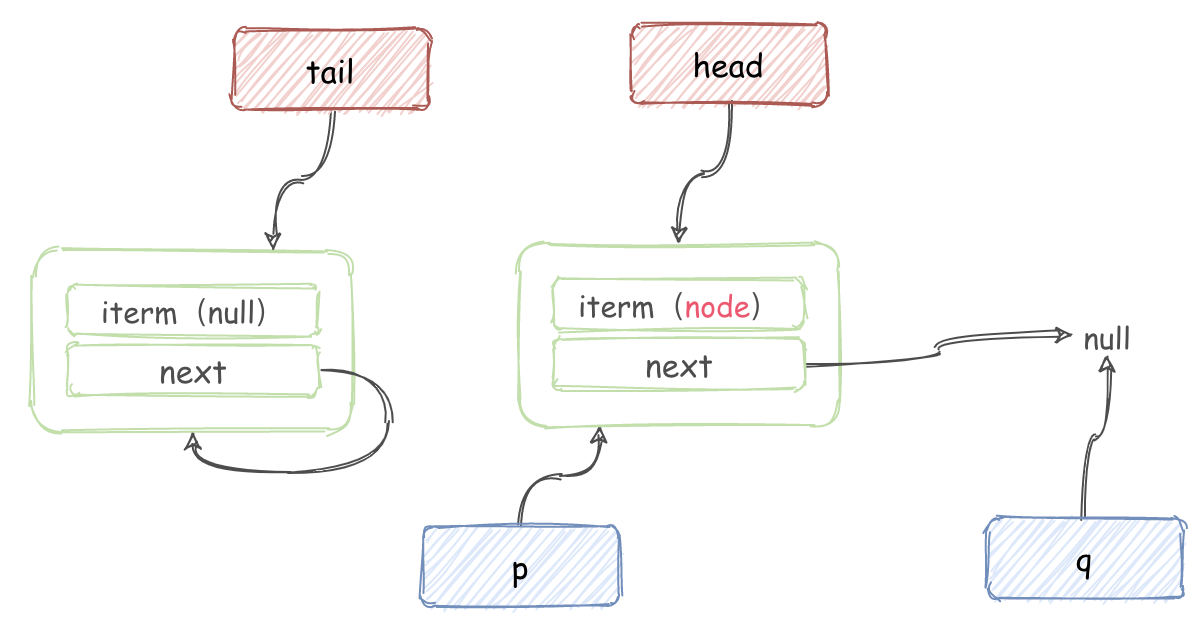












评论